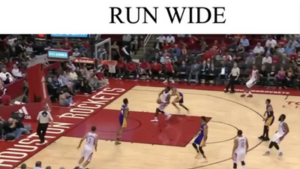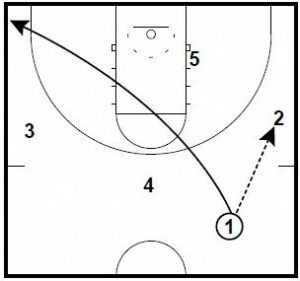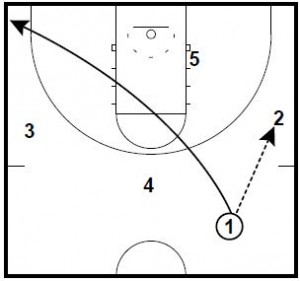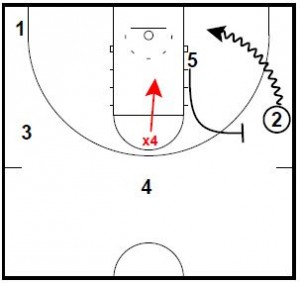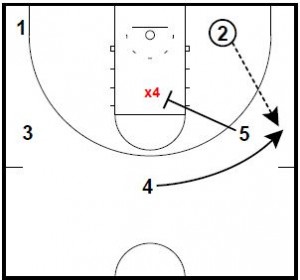In the clip below Gonzaga assistant coach Stephen Gentry (formerly an Illinois assistant) discusses some automatic reads in transition that were utilized when he was at Illinois.
The first scenario occurs when one big is trailing the play and the other has made a rim run. In this scenario, the read is a simple roll-and-replace.
The trailing big sets a ball screen and rolls and the big that made the rim run replaces him at the top of the key. If the rolling big does not receive the ball from the point guard he seals his man and looks to receive a high-low pass from the other big.
The second scenario that may occur in transition is when both bigs are trailing the play. This initiates an automatic double-drag screen. Coach Gentry stresses the need for 4 and 5 to set their screens at least 6-8 feet apart. He wants the defender on the point guard to negotiate two separate screens.
Coach Gentry states that it doesn’t matter which big sets the first screen but he always has the 5 roll and the 4 pop. The 4 should be careful and pop to the middle third of the floor so the defender guarding the corner can’t defend him and the offensive player in the corner.
The third scenario covered by Coach Gentry is the pitch ahead.
If the ball is passed ahead before crossing halfcourt the point guard will cut through to the opposite corner. This will signal the 3 to lift to the wing. The 2 that received the pitch ahead will hit the trailing big. The 3 man will now make a basket cut (Buffalo Action) and fill the opposite corner.
After the 3 cuts through the 1 will lift to the wing. The 4 man passes him the ball and chases into a ball screen. From here they simply flow into their offense.
This clip was taken from a full presentation by Coach Gentry at a TABC Clinic. Click the following link to gain access to the complete presentation: Stephen Gentry – Transition Offense
